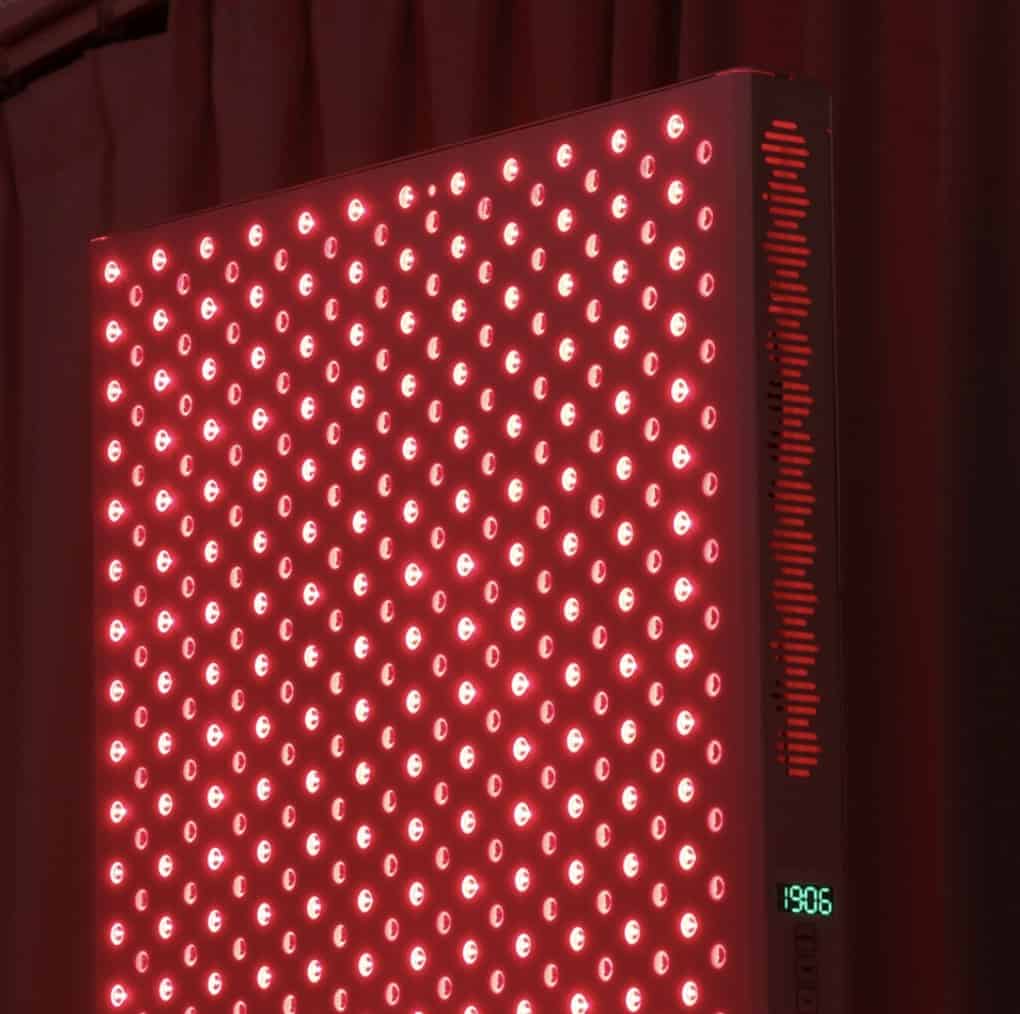Red light therapy had been associated with luxurious, pricey treatment for years. If you had time and money for it, you could only get it in a few salons and doctor’s offices. Fortunately, as times have changed, this is not the case anymore. In-home red light therapy devices are widely sold around the world. There are numerous brands selling light panels of all sizes and shapes, so if you were to decide to buy one, you’d be able to get the device tailored to your requirements.
Sure, it’s excellent that red light therapy is now accessible to more people. However, do in-home RLT devices work as well as treatments done by professionals? What are red light therapy pros and cons when done at home? In this post, we dive deep into the details to answer your questions.
Chapter Overview
Why Does Red Light Therapy Work (At All?)
Before we take a look at in-home red light therapy devices, let’s break down how and why RLT works at all. The science behind it lies in red light’s power to penetrate the skin as deeply as 5 millimeters. And it turns out that our cells love being exposed to red light! Research shows that low-level wavelengths enhance cellular activity by optimizing mitochondrial metabolism. As a result, mitochondria release increased amounts of ATP (cellular energy), which boosts our cell’s performance.
Cells that work harder provide us with heightened powers of regeneration. This is where all the red light therapy benefits come from. What are they? Improved skin texture and health, faster tissue recovery, increased testosterone, better sleep, boosted wound healing, and cognitive functions, to name a few.
Is Red Light Therapy At Home Safe?
Red light therapy, aka photomodulation, aka low-level laser therapy, is a 100% non-invasive treatment you can get from the comfort of your home. FDA has listed in-home red light therapy panels as class II medical-grade devices. So if you purchase your RLT panel from a credible seller, you have nothing to worry about.
Generally speaking, red light therapy is considered a safe treatment (whether you get it at the doctor’s or home). Even though it reaches the skin’s deep layers, red light doesn’t produce any radiation or harmful rays.
However, as there is no way of knowing how RLT will affect you considering your unique medical record, it is always recommended to consult a physician before you begin red light therapy.
How Can I Prepare For In-home RLT Session?
If you decide to do red light therapy at home, there are some things to consider. Research shows that red and NIR light work better when exposed to bare skin. So make sure to remove any clothing before treatments. It’s also recommended that you prep your skin as well. You won’t have to do anything major though, just ensure that you aren’t wearing any makeup or skincare products.
For even better results, consider exfoliating the skin to remove dead skin cells. We recommend using gentle physical scrub instead of chemical peels. Especially avoid using alpha hydroxy acids (Glycolic acid, lactic acid, mandelic acid, etc.), and retinol as these substances tend to increase photosensitivity.
Can I Overdo Red Light Therapy?
Even though red light therapy has been around for decades, we’re still discovering new facts about it every day. From the extensive research that has been done, RLT hasn’t shown any side effects, nor has there been any record of overdoing it. However, it doesn’t mean that you should not be careful.
If you’re just starting out, give your body some time to adjust to the red light. Specialists suggest starting with 15-20 minute sessions, 2-3 times a week. After a couple of weeks, gradually increase the frequency to 5 times per week.
How Long Does It Take For Red Light Therapy To Work?
When it comes to the effectiveness of any treatment method, even the most traditional ones, your individual condition greatly influences results. For example, suppose you want to use red light therapy to aid in fighting acne. In that case, the outcome will rely on these factors – severity of your current situation, the type of acne you have, previous treatments, how long you’ve had it, etc. So unless you consult a professional with proper skills and experience, no one will be able to say precisely how long it will take for RLT to work for you.
But generally speaking, for most conditions that can be targeted by red light therapy, you’ll see signs of improvement in around six weeks. It takes 1-4 months of continuous treatments to obtain significant results and an additional month for maintenance.

